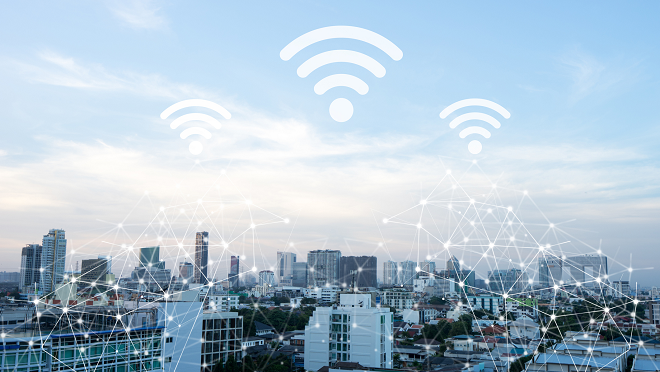Networks Basic Acknowledge
A network is a group of desktop or laptop computers (and other hardware devices, such as printers) that is connected together with the primary purpose of communicating and exchanging data. Networking is all about sharing, and it allows your computers to connect to the Internet, talk to each other, and share resources like files and printers.
There are two types of networks to choose from – wired and wireless. You need to determine which one best fits your home network, or you can even combine the two. Keep in mind that both has its advantages as well as disadvantages.
There are many different types of networks that range in size and proximity. Most can be categorized into one of two basic groups: local area networks (LAN) and wide area networks (WAN).
A local area network (LAN) is a group of networked computers, printers, or other hardware devices that are all connected relatively close to each other like an office, home, or school. It allows connected users to share files, printers, or other applications. Whether as small as two computers or much larger in size, a LAN’s major purpose is to allow users to share information quickly and easily.
A wide area network (WAN) is a group of networked computers in a much larger geographical area, such as a state or country. The best example of a WAN is the Internet, which spans the entire world. A router connects your personal LAN to the WAN using a type of networking protocol called TCP/IP.
Every networked computer can communicate with each other through a type of software that is already included with your computer’s operating system, such as Windows. The software runs in the background and plays an integral role in specifying the “techie” aspects of networking. Client and protocol are two important components in networking software.
Client – The software that provides your computer with access to the network’s services. The computer that requests the information from a network is usually referred to as the client. For example, when you are surfing the Internet, your computer makes client requests to receive a Web site from somewhere in the U.S. or anywhere around the world.
Protocol – This is the language that the computers use to communicate with each other. The industry standard in networking today is called TCP/IP (Transmission Control Protocol/Internet Protocol). Along with your home network, it is the same protocol used most commonly on the Internet.
Wireless networks don’t use cables for connections, but rather they use radio waves, like cordless phones. The advantage of a wireless network is the mobility and freedom from the restriction of wires or a fixed connection.
Also known as Wi-Fi, or Wireless Fidelity, wireless networks allow you to use your network devices anywhere in an office or home, even out on the patio. You can check your e-mail or surf the Internet on your laptop anywhere in your house. There is no need to drill holes in the wall and install Ethernet cables. You can network anywhere – without wires. Outside your home, wireless networking is available in public “hotspots,” such as coffee shops, businesses, hotel rooms, and airports. This is perfect for those of you who do a lot of traveling.
Linksys wireless routers are also equipped for wired connections – giving you the best of both worlds – connect wirelessly when you’d like to roam around your house, and connect wired when the utmost speed is important to you. For convenience and ease of use, wireless networking is the answer.
Wired networks have been around for decades. Wired networking technology found today is known as Ethernet. The data cables, known as Ethernet network cables or wired (CAT5) cables, connect computers and other devices that make up the networks. Wired networks are best when you need to move large amounts of data at high speeds, such as professional-quality multimedia.
Router: This is considered the heart of your network and is the device that routes all the traffic to and from the Internet to the various computers on your network. It lets you share files and printers, and provides a basic layer of security from Internet threats.
High-speed Internet Connection (either DSL or cable): You can purchase High-speed Internet service from your local telephone (for DSL) or cable company. Both types of connections are considerably faster than dial-up access. High-speed Internet is also commonly referred to as broadband.
Modem: Connects your Internet service to your computer so you can surf the Internet and access your e-mail. Depending upon what type of broadband service you have, you must purchase or rent either a DSL or cable modem. Or, you can purchase a modem from your local electronics retailer or e-retail store. Linksys offers a gateway router which is an all-in-one solution that combines the functions of a router with a cable or DSL modem so that two separate devices are not required.
Network Adapter: Allows your computers to connect to the network. If you already have a wireless or network adapter pre-installed in your computer, you may not need to purchase one. There are different types of adapters available, depending on if you have a desktop or laptop computer.

